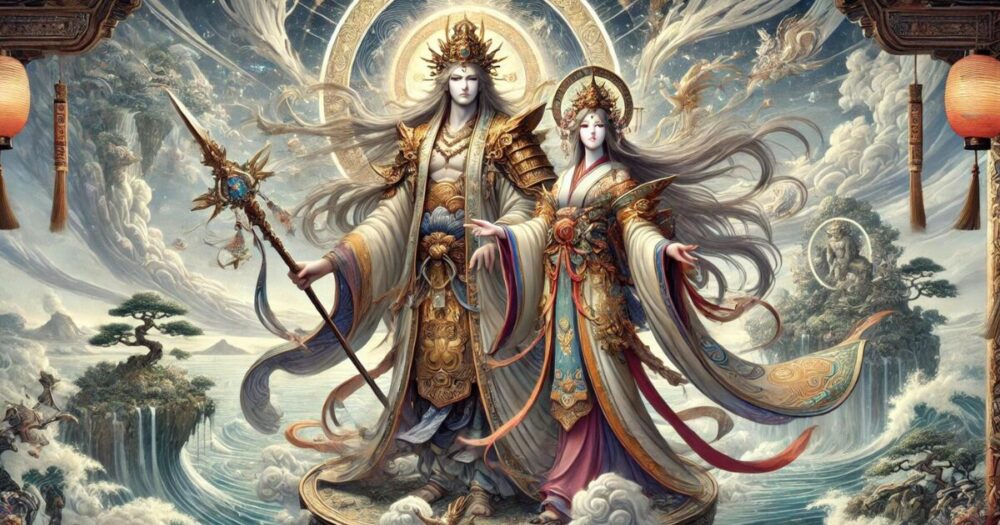Ise Jingu, affectionately known as “O-Ise-san,” is revered by many as a sacred site in Japan. In this article, we will explore the history and origins of Ise Jingu, providing insights for those planning to visit this significant shrine. Let’s embark on a journey through Japan’s rich traditions and history!
For those who want to know more about the Ise Grand Shrine, click here.
The Origins and History of Ise Jingu
The origins of Ise Jingu are ancient, tracing back to Japanese mythology. According to legend, when Japan was still a land of gods, the sun goddess Amaterasu Omikami made this place her home, becoming the central deity of Japan’s pantheon. Ise Jingu was subsequently built to enshrine Amaterasu Omikami, establishing it as a sacred place in Japan.
The Mythical Origins of Ise Jingu
In the beginning, the celestial couple, Izanagi and Izanami, were commanded by the gods of Takamagahara (the High Plain of Heaven) to create land. Using the divine spear “Ame no Nuboko,” they stirred the ocean, and as they lifted the spear, drops fell and solidified into the first island, Onogoro Island. Descending to this island, they built a palace and held their wedding ceremony, thus creating the foundation of the land of the gods.
From this island, they created the Great Eight Islands of Japan and many other deities. However, the birth of the fire god Kagutsuchi fatally injured Izanami, leading to her death. In his grief, Izanagi ventured to Yomi, the land of the dead, to retrieve her, but Izanami had already consumed the food of Yomi and could not return to the living world.
Overcome with sorrow, Izanagi purified himself upon his return to the living world. From this purification, three significant deities were born: Amaterasu Omikami from his left eye, Tsukuyomi no Mikoto from his right eye, and Susanoo no Mikoto from his nose. These three deities, known as the Three Precious Children, heralded a new chapter in the mythological world.
However, Susanoo’s unruly behavior caused Amaterasu to retreat into the Heavenly Rock Cave, plunging the world into darkness. The other gods devised a plan to coax her out. They performed rituals and dances in front of the cave, and when Ame no Uzume danced provocatively, Amaterasu peeked out in curiosity. At that moment, the strong god Ame no Tajikarao opened the cave, allowing light to return to the world.
Amaterasu later sent her grandson, Ninigi no Mikoto, to earth with sacred regalia to rule the land of Japan. This divine mandate, known as “Tenno Shinka” (the Heavenly Descent), established the imperial lineage and the everlasting prosperity of Japan. Amaterasu’s blessing, “eternal as the heavens and earth,” symbolizes the eternal continuity of the Japanese imperial family and the nation.
This grand narrative, filled with beginnings and endings, love and sorrow, hope and renewal, is one of the most compelling episodes in Japanese mythology, illustrating the profound cycles of life and the divine.
Conclusion
Ise Jingu is deeply rooted in Japan’s tradition and history, with its establishment intertwined with ancient mythology, particularly the presence of Amaterasu Omikami. A visit to Ise Jingu allows one to feel the mystical power of Amaterasu and experience a profound connection with Japan’s sacred past. A visit to this holy site is bound to leave lasting memories.



